
Thank you for visiting HOJO website. If you have any enquiry, please feel free to get in touch with us at
▼ Akira Hojo
▼ Hojo Newsletter
▼ HOJO FACEBOOK





HOME > Black Tea > Lapsang Souchong
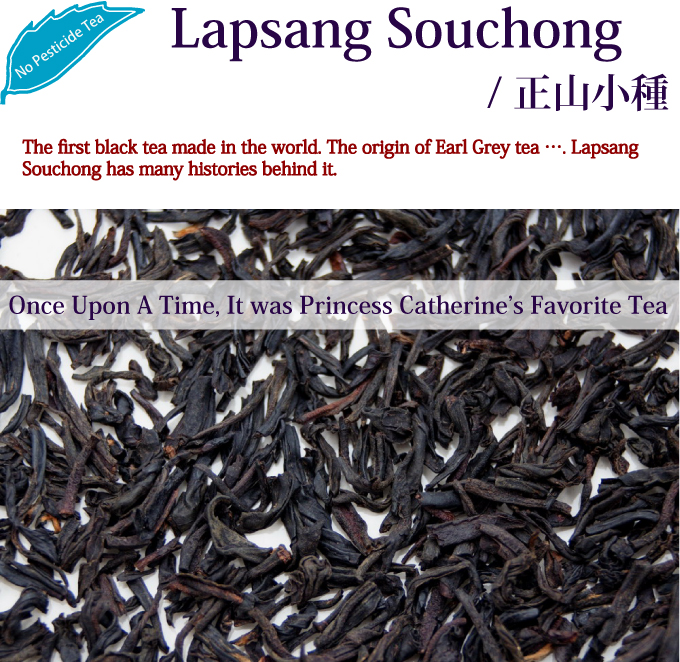
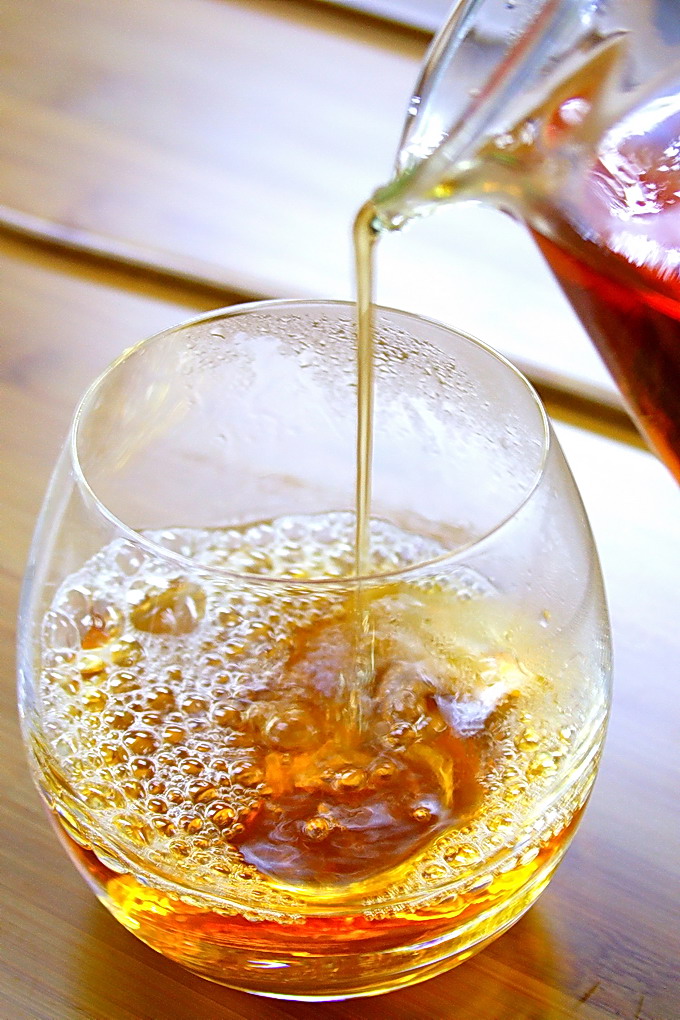
Lapsang Souchong has a very identical smoky aroma. Once you drink it, you may never forget about it. Just like the Espresso coffee, it is either you love this taste very much or do not want to drink it any more.
Unfortunately, it is said that most of the Lapsang Souchong available in the market is intentionally smoked.
Experience our genuine Lapsang Souchong that is not only smoky but you would feel the sweetness like dried Longan.
We stick to the quality. We purchase our tea from the most historic and genuine manufacturing area where the tea is made according to the age-old method used until today. This genuine quality is different in terms of the following points:
Try to look at the tea leaf under the sunshine. You would notice that some of the tea leaves are shining like black crystal. This is the fact alone proves its authenticity of the real Lapsang Souchong.
The fake quality usually shows the following characters:
Due to its smoky aroma, many people assume that it tastes bitter. However HOJO's Lapsang Souchong is not bitter at all. Sometimes the poor quality Lapsang Souchong even gives a sour after taste. Our Lapsang Souchong gives a strong dried Longan aroma, smooth drinking feeling and a slight stimulation when it passes though our throat thanks to the amber.
Lapsang Souchong has an amazing characteristic. It is the BEST PARTNER WITH SCOTCH SINGLE MOLT WHISKY. Sip a little whisky and then try a cup of hot Lapsang Souchong. It is the perfect match to collaborate each other. You can't help drinking both until you completely get drunk!
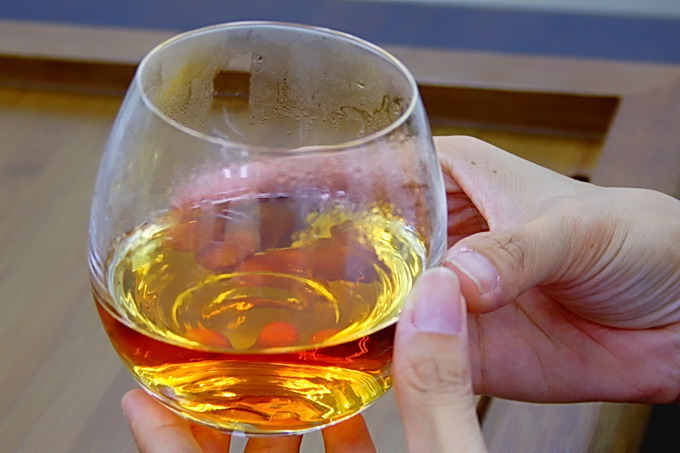
Premium Lapsang Souchong gives a very transparent color. In order to enjoy its exclusive golden orangey color, we recommend serving it with a crystal glass.
This tea is one the best compliments for meaty food. After eating oily food, it can wash away the oil from your mouth. A moderate stimulation of amber and smoky aroma can enhance the cooking. In addition, this tea is very relaxing drink when taken if we are physically tired.
HOJO's Lapsang Souchong comes from the non-pesticide tea garden located at Wu Yi Mountain. In addition to the pesticide status, no chemical fertilizer is used. Tea garden is in very poor condition in terms of nutrition. This will make the tea leaves give a very sweet taste and thick body. Our tea is sweet, thanks to the non-pesticide tea garden.
The longer this tea is kept, the better the taste and flavor becomes. You do not have to keep this tea in the fridge, but room temperature is suitable.
Many customers think that they cannot brew black tea more than once. Please try our Lapsang Souchong. You can brew it at least 5-6 times. It is very economical in a way. Is it not?
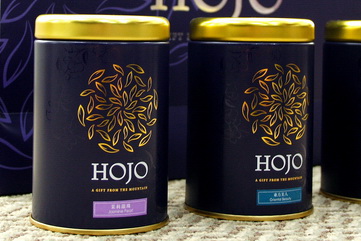

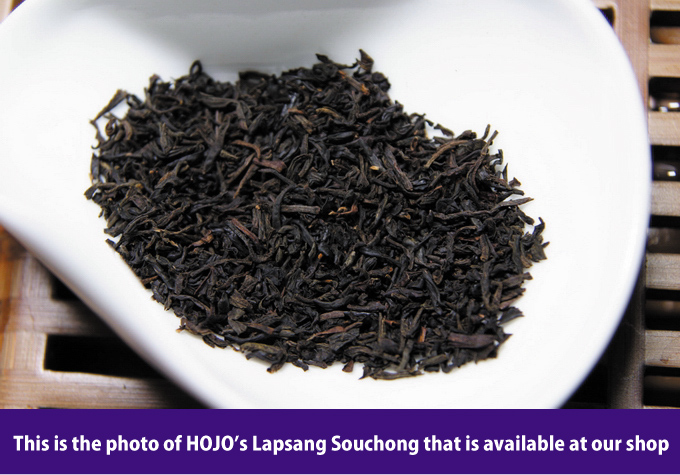
Like the Pu-Erh Raw Tea, many kinds of tea can be stored for a long period of time to make its quality better. When you keep Lapsang Souchong for a few years, the taste and flavor will improve and it reduced the smoky flavor.

Lapsang Souchong (LS) is a black tea originally from the Wuyi Mountain in the Fujian province of China. The original LS is produced by the specified tea tree (called Xiao-zhong) which originated from Tongmu village (桐木村 Tongmu Cun) that is part of Xingcun Town (星村鎮 Xingcun Zhen) at Wuyi City (武夷市 Wuyi Shi) of Fujian Province (福建省).
HOJO particularly focuses on the Lapsang Souchong produced from the Tongmu area, which is located at the national nature preserved park of Wuyi Mountain at Fujian Province. The high mountains with its thick pine forests and heavy mist provide the ideal environment for growing top quality tea. The best Lapsang is produced right here. In addition, we choose the organic tea as our own standard. Our original Lapsang Souchong has a very distinctive and aromatic flavor which is Dried Longan Flavor in addition to a subtle smoky flavor. The secret is due to the drying process using the pine tree. The adjustment and control of the fire that is called Wen-huo (文火, smoldering fire) is the most critical factor in producing this tea. The Real Lapsang Souchong is rare as Wuyi Mountain is a small area and there is a great demand for it. There is a significant difference between real LS and widely available LS.

LS has had a long history behind it. With more than 400 years of history, it was said that LS is the world’s first black tea. LS was produced as early as during the Qing Dynasty. Dated back to 1604, the Dutch imported LS to the West. It was regarded as a precious medical product and sold at pharmacies. At that time, there was no other black tea in the market. Thus, it was believed that LS is the earliest black tea invented, and Tongmu Village was the cradle of the black tea in the world. The Dutch dominated the European trade in LS until 1669, when the English first imported it on a commercial scale. By the time the English East India Company began trading in tea, the drink was well established at the English courts, where it was no longer valued primarily for its medicinal benefits, but was drunk socially, as an invigorating beverage.
According to historical records, in the year 1662, Princess Catherine from Portugal who when was married to Prince Charles had brought along her favorite LS tea to England. Her passion for tea had played the important role to promote the LS in England. LS was treated as a luxury drink in England, France, Dutch and The Netherlands. In England itself, LS is recognized as the representative of Chinese Tea, and it used to serve England’s Royal Family thus it was known as the Royal Black Tea in England.
The name of LS originated from Wuyi Rock Tea (武夷岩茶). It was an oolong tea in the very beginning of history. Its name was recorded as early as year 1734, where the name Souchong or Xiao-zhong referred to the best quality tea trees grown at the rocky area of the mountain which was used to produce the oolong tea.
Why the Wuyi Rock Tea became the LS?
It is said that during the Qing Dynasty, due to the unstable political situation, the army marched to the Xingcun Town (星村镇) at Tongmu Village (桐木村) and stationed in the tea shop. The Xinchun Town was the original places where many tea farmers lived and produced oolong tea. The farmers used to produce the oolong tea, after withering, oxidized, maceration and partially dried, the wet mass of semi-processed tea leaves will be sold to the tea shop and the subsequent drying was done in the tea shop. Due to the invasion of army, the workers in the tea shop went into hiding to save their lives. Because the bag of tea leaves was still warm (due to the non-enzymatic oxidation which caused an increase of the temperature of tea leaves), the soldier laid down to rest on the bags of tea. The next day, when the soldiers left and the workers returned, they found that all the tea leaves inside the bag turned red and gave a specific fragrance (due to post fermentation under the humid and warm condition). However, they were not able to dry it at once since the drying facility was occupied by the freshly processed tea leaves sent by farmer in the morning, yet they did not want to waste the product, thus, the worker roasted the tea leaves in the pan to dry it and at the same time, lighted up the fire using pine wood in the room to accelerate the drying. As the smoke from pine wood was absorbed by tea leaves, the final product resulted in producing the scent of smoky pine. When it was introduced at Fuzhou, it drew the attention of foreign traders and was widely sold to European market, and eventually became used as a tribute to the royal court of UK.
How the Lapsang Souchong was named?
In the very beginning, when LS was produced, people was astonished by the ‘black’ appearance, thus it was called Wu-cha (乌茶, means black tea). When brewed, the black dry tea leaf gave a reddish liquor, and thus, the name Hong-cha (红茶, red tea), is used. Since it was produced using the Xiao-zhong (小种) tea leaf, the name “Xiao-zhong Hongcha is used (the pronunciation in Chinese, 小种红茶). Throughout history, Hokkien or Fujian (福建) people were the main group of people actively involved in tea manufacturing and trading. They spoke the Min-Nan language (闽南语). When the tea was first brought to Fuzhou (福州, a city with a seaport thatwas located at Fujian Province), it was introduced as Souchong black tea by those Hokkien people (小种Xiao-zhong, is pronounced as Souchong in Min-Nan language).
After all, since the tea was produced at Tongmu Village, it was also called Tongmu Xiao-zhong (桐木小种). Besides, some people called it Xingcun Xiao-zhong (星村小种) since the tea was gathered at Xingcun town for trade purpose.
Due to its increase popularity, many tea producers would take old tea or other varieties, and sent them to Xingcun Town where smoke was added to the finished product before trading. However, due to its poorer quality, people named it as Yan Xiao-zhong (烟小种, means smoky souchong).
At the later stage, other counties started to product black tea. From a geographical point of view, Tongmu Village was located deep inside the Wuyi Mountain. Thus, tea produced from there was named as Nei-shan Xiao-zhong (内山小种,means inner mountain Souchong) and is the opposite to tea produced from other areas that was recognized as “Wai-shan Xiao-zhong (外山小种, means outside mountain souchong). During Qing Dynasty, the Min-nan language pronounced the word内as Lap, thus, the name Lapsang was invented.
Looking at its fame and promising earning which could be gotten from the sale of LS, many tea producers took old tea and smoked it heavily, and sold it as LS. Eventually, the authentic LS producer used the word正 (pronounce as Zheng in Chinese, meaning genuine) in replacement of内. At last, 正山小种 (Lapsang Souchong) is used in Chinese writing up to the present time. The naming of LS is summarized in the following table:
| Chinese | Pronounciation | Fujian | 日本語 | English | Remark |
|---|---|---|---|---|---|
| 乌茶 | Wu-cha | - | 烏茶 | Black tea | The name is used referring to the dark appearance of dry tea leaf.. |
| 红茶 | Hong-cha | - | 紅茶 | Red tea | This name is referring to the reddish color of liquor when brewing the tea。 |
| 小种红茶 | Xiao-zhong Hongcha | 小種 = Souchong | 小種紅茶 | Souchong black tea | This is the first name used which refers to its name of the original tea tree that was grown at the Wuyi Rock Mountain |
| 星村小种 | Xingcun Xiao-zhong | - | 星村小種 | - | Some people called it Xingcun Xiao-zhong (星村小种) since the tea was gathered at Xingcun town for trading purposes. |
| 桐木小种 | Tongmu Xiao-zhong | - | 桐木小種 | - | Since the tea was produced at Tongmu Village, it was also called Tongmu Xiao-zhong |
| 烟小种 | Yan Xiao-zhong | - | 烟小種 | Smoky Souchong | Referring to the tea (sometimes old tea) which was sent to Xingcun Town where the finished product was smoked before trading. Due to its poorer quality and excessive smoky flavor, it was named Yan Xiao-zhong (烟小种, means smoky souchong). |
| 内山小种 | Neishan Xiaozhong | 内山 = Lapsang | 内山小種 | Lapsang Souchong | Tea produced from Tongmu Village which was located deep inside the Wuyi Mountain, named as Nei-shan Xiao-zhong (内山小种,means inner mountain Souchong). During Qing Dynasty, the Min-nan language pronounced the word 内 as Lap, thus, the name Lapsang was invented. |
| 外山小种 | Waishan Xiao-zhong | - | 外山小種 | - | Tea produced from areas other than Tongmu Village was recognized as Wai-shan Xiao-zhong (外山小种, means outside mountain souchong). |
| 正山小种 | Zhengshan Xiao-zhong | - | 正山小種 | Lapsang Souchong | The authentic LS producer used the word 正 (pronounce as Zheng in Chinese, |
At last, Lapsang Souchong became a most wel-known name now.
The tea garden at Tongmu Village is scattered around the Wuyi Rocky Mountainous area (800-1500m a.s.l). At this mountainous area, the present of primitive forest is rich in decomposed soil and it consistently supplies minerals to ensure exuberant growth of the tea plant naturally. One of the essential factors for good black tea is its mellow taste. This taste is originated from amino acid found in tea leaves, known as theanine. Young buds contains high level of theanine and when tea leaves receive sun light, theanine is converted to polyphenol such as catechins. At high elevations, the area is often covered by fog which blocks direct sun light on tea leaves. Consequently, tea leaves are very rich in theanine as the conversion to polyphenol is not effectively taking place.
Besides, at high elevation, there is a huge temperature different between day time and night time. During the daytime, there is sufficient sun light and tea leaves vigorously produce plentiful of substances such as amino acid and carbohydrates, which are essential for the exclusive quality tea as well as the growth of tea leaves. At night, if the temperature is high, the metabolism is continuingly taking place, and tea leaves will consume the substances that were produced during the day time. However, at high elevations or mountainous area, the lower atmospheric temperature at night caused the tea leaves to become less active and therefore those substances are remaining in the leaves.
With these factors, you will discover that the tea leaves are very rich in substances that contribute to the quality of black tea.
Due to the high Wuyi mountainous area and low temperature, the only cultivars that survive under this stringent growing conditions is the Wuyi cultivars (武夷菜茶). The first flush comes rather late on account of the lower temperature. The plucking season starts only somewhere in the second week of May. When the first buds grow and fully develop, it is called Zhu-ya (驻芽, which means fresh leaves without buds). This indicates the starting of the harvesting season. Usually, black tea in China is produced using 1 bud plus 1-3 leaves, and black tea with plenty of buds is highly sought after, such as Keemun, Yunnan Golden Bud Tea, etc. (please refer to the table below). For LS, the more mature the tea leaves, i.e., the first two to three leaves are plucked. In the production of black tea, the combination of amino acid and polyphenols content at the right ratio contributes to the good quality of tea. The content of amino acid is higher in young leaves than more matured leaves, while the polyphenols content is higher during summer (more sunshine and higher temperature), but it is gradually reduced due to the aging of matured leaves. Thus, the timing of plucking is important to obtain the leaves with the right content of both substances.
| Black Tea of China | Plucking |
|---|---|
| Lapsang Souchong正山小种 | The fresh leaf (驻芽) on top following 1 - 2 leaves |
| 滇紅 Yunnan Black Tea | 1 bud 1 leaf |
| 金芽茶 Golden Bud | Single bud |
| 祁門 Keemun Black Tea | 1 bud 2 leaves (higher grade) or 1 bud 3 leaves |
| 宁紅 Ning-hong | 1 bud 1 leaf or 1 bud 2 leaves |
| 九曲紅梅 Jiu-qu Hong-mei | 1 bud 2 leaves |
| 政和工夫紅茶 Zheng-he Black Tea | 1 bud 1 leaf or 1 bud 2 leaves |
| 英德紅茶 Guandong Black Tea | 1bud with 2-3 leaves |
After plucking, the leaves are withered over pine wood fires. At the Wuyi mountainous area, sunshine is weak especially during spring. Thus, the withering has to be carried out with additional heat from burning pine firewood. This is not the identical process for LS, it is rather the common practice in the production of other kinds of tea. The firewood is burned with a strong fire (明火 Ming-huo), generating heat to aid water evaporation of tea leaves. This does not contribute to the smoky flavor of end product. Tea leaves is placed on bamboo mat, piled at 3-7 cm thick, and the mat is placed on the wooden rack. At the bottom of rack, pine wood is arranged and burned. In the withering room, the atmospheric temperature is controlled at 30˚C, and the tea leaves are turnover and mixed well every 20 minutes. When the leaves become soft and are not shiny anymore, they are removed from the wooden rack and placed on the floor to cool down. The leaves are then rolled into taut strips (called 揉捻Rou-nian, which means maceration).
After the rolling process, tea leaves are placed into wooden barrels and covered with cloth for enzymatic oxidation to take place. At high altitudes of the mountainous area, due to the much lower atmospheric temperature, the tea leaves are gathered together and kept in the barrels in order to maintain the optimum temperature for enzymatic reaction. When the weather gets cooler, the barrels will be placed nearby the cook-stove to keep tea leaves warm. When 80% of the tea leaves have turned into a copper color and begin to emit their own pleasant fragrance, this indicates the oxidation is sufficient.
Unlike any other black tea which is dried immediately after the oxidation process, LS is instead pan fried followed by subsequent drying. During the pan-frying session, the high temperature in a short time heats up. This treatment will inactive the enzyme instantly and prevent prolonged oxidation, stabilize the quality and characteristic of fermented tea leaves prior to long hour drying (8-10 hours) in the following step. When the pan temperature reaches 200˚C, oxidized tea leaves is placed into the pan and fried. It takes 2-3 min to give off the greenish and grassy smell of tea leaves, and further improve the aromatic fragrance of tea leaves.
While the fried tea leaves remain hot, it is quickly macerated for the second time. The tea leaves are rolled and tightened, more tea fluid is squeezed out and remain on the leaves’ surface. The expression of the juice over the leaf particles increases the strength (i.e. the soluble matter in the liquor when brew). In addition, it helps to absorb the smoke at a later stage.
In China, during the production of high grade tea, regardless of whether it is green tea, black tea or yellow tea, drying of tea leaves in the bamboo basket (烘笼) that is heated over burning firewood was the common final step. However, for LS, there are two critical differences which contribute to the Dried Longan aroma and smoky flavor:
Therefore, due to the incomplete combustion, the smoldering pine fire generates the smoke containing vaporized amber essence, absorbed by tea leaves, and giving the typical pine smoke flavor. The drying process takes 8-10 hours in order to ensure complete drying and develop the distinctive flavor of LS. Besides, this crucial step of drying also gives rise to the luster dark reddish color (乌润 Wu-run) of tea leaf as its absorbed amber essence.
In the past, the popular belief that LS has the typical dried longan flavor in consequence of the specified tea leaf used – it is proven to be a false statement. Another tea cultivar, Zheng-he Xiao-zhong (政和小种, tea cultivar named after the Zheng-he County at Fujian Province), was used to produce both Keemun black tea and LS, and result showed that only LS gave the dried longan flavor but not the Keemun black tea. Apparently, the crucial drying process using smoldering pine fire is the decisive step in making LS with unique dried longan aroma with smoky flavor.
Leaf is thick, robust, tightly rolled taut strips, and not containing buds.
Leaf in dark black color (乌润 Wu-run). It looks glossy and lustrous (油亮 You-liang). This is because the tea leaves absorbed amber essence during the drying process.
The good quality tea consist pieces of leaf of fairly even size. If the tea is of inferior quality, the leaf is mixed with lots of bold leaves which are flat, loose and large in size. This is made from old leaves which contains high levels of fiber that cans hardly rolled into tight strips during the process. These leaves give thinner taste and lighter color when brewed. Besides, poor quality tea contains a lot of broken pieces which are light in weight. This is due to the improper handling and the finished product is not well sifted.
The well-made tea must be free from extraneous matter such as fiber, bamboo or wooden flakes, sand or stone, dust. Stalk is unavoidable as the leaf is plucked during summer, but must be at minimal level, e.g. a few pieces per gram.
Dry leaf gives very strong dried Longan flavor with smoky flavor. When brewed, the liquor gives the same aromatic profile. For real LS, after brewing, the dried Longan flavor still remains in the brewed leaves
When brewed, the tea produces a liquor with luster and bright reddish brown color. In a cup, the real LS gives a bright golden ring which appears near the edge of liquor to the cup. The golden ring is the sign that tea leaves are rich in theaflavins that is vital for good quality tea.
Like dates (枣 Zao), smooth, thick, and the taste lingers on tongue and mouth, and giving an intensive strength. It is different from the commercial versions of this famous tea which often gives a harsh astringency or roughness in taste.
The brewed leaves show a bright brownish red color, which is very consistent and even over the leaves, indicating good quality and well-made tea. When touched with the finger, the leaves are thick, soft and elastic. If the tea is of poor quality, leaves are a mixture of greenish brown and reddish color. When touched, the leaf is very thin but stiff, with very thick and coarse leaf vein. Besides, the green color spot which is found on the surface of tea leaves indicates insufficient oxidation. The leaf looks dull and lack of brightness, and is dark in appearance indicating it undergoing an inappropriate process.
Go to further information about suitable water for brewing tea >>
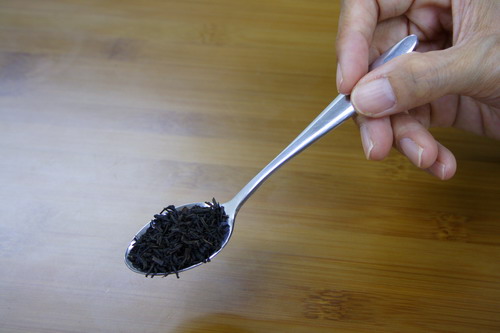
Alternatively, steep the tea leaf in water up to 1 minutes, the tea will be thicker. It is suitable to consume after meals or during tea time which is complementary to light food.After 1st brewing, tea leaves must be filtered well and kept without water. This is to avoid the liquor becoming bitter and stewed, and also to avoid unpleasant feeling of bits of tea leaves on your palate when drinking. Besides, it prevents tea leaves from being over cooked. In addition, tea after filtration will be ready for second brewing. Some teapots have a filter to retain the tea leaves. For teapot without the filter, place a tea strainer on top of the cup before pouring the tea into the cup. It is not recommended to use the traditional tea ball that could be placed into the teapot; tea leaves are locked in and do not fully expand when brewed in hot water, thus it cannot release their full aroma and taste. If the tea is too strong, add boiled water to the cup.
Milk and sugar may be added (do not use cream) to taste. Besides, LS can be mixed with other China black tea to dilute the smokiness of tea. Mix dry leaves together and prepare following the same way aforementioned.



Lapsang Souchong is the tea that started the boom of black tea demand in England. Why had such a smoky tea impressed the English? In England, it is known that water there is very hard. (Not all the area though). When using hard water to brew black tea, the mineral form the complex with the constituent of tea such as poly phenol and tannin. Once they form a complex, it seriously affects its taste. In general, the taste becomes flat and bitter.
We have conducted an experiment brewing Lapsang Souchong using hard and soft water and taste them in straight and with milk.
Having it straight, tea brewed in hard water gives a less smoky aroma which was much easier to drink, yet taste became thinner. On the contrary, with milk, we felt that hard water brewed tea was much easier to drink. The taste and aroma was well balanced. In conclusion, we found that hard water is an excellent choice for brewing Lapsang Souchong.
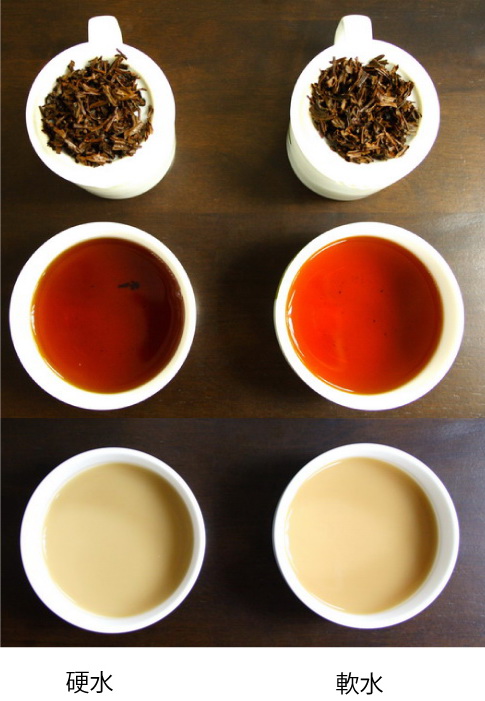

Please feel free to send us e-mail for enquiry at:

 |
We accept various kinds of credit card through Paypal.
Only if customer prefer other option of payment, we suggest "Bank Transfer".
Various choice of shipping method
EMS, SAL, Small Packet, Small Packet (SAL) Yamato Express and Surface
For shipping tea, we usually suggest small air parcel, the estimated shipping cost of tea in 100g (with wrapping material ) is
Small Parcel
USA JPY 600, EU JPY600 and Asia JPY470
Small Packet (SAL)
USA JPY380, EU JPY380 and Asia JPY320
The shipping fee to oversea by small air parcel happens to be even cheaper than domestic shipping fee in Japan.
For your information, some countries, EU in particular imposes custom duty. We need buyer to bare the duty. We are sorry, but we cannot change the amount on the invoice, and we do not mark any packages as gifts. We will strictly follow the custom regulation.